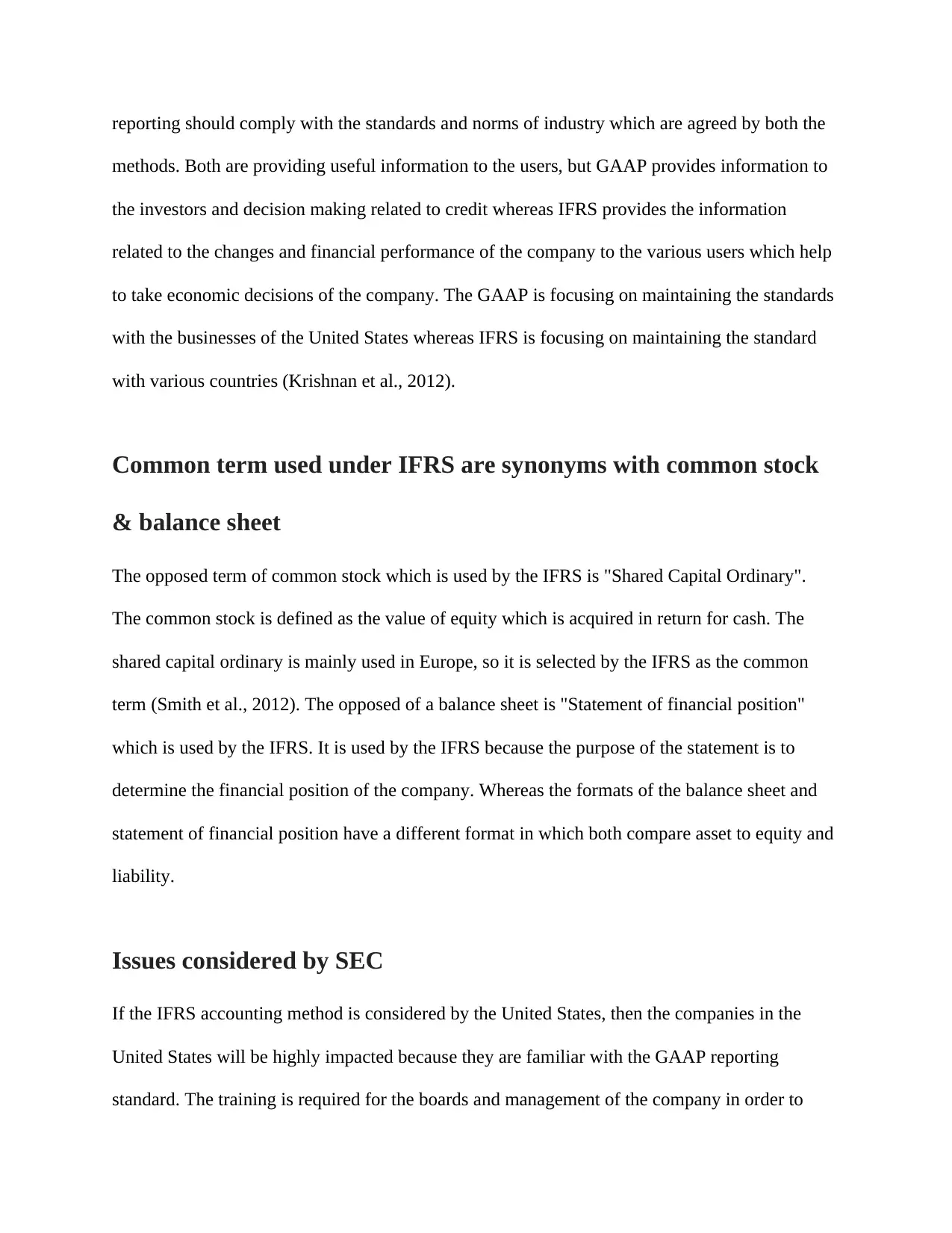Comparison Between IFRS and GAAP
VerifiedAdded on 2019/09/16
|6
|1282
|319
Report
AI Summary
The assignment compares IFRS (International Financial Reporting Standards) and GAAP (Generally Accepted Accounting Principles). Both methods have similar objectives in financial reporting, but differ in format, with GAAP listing accounts based on liquidity and IFRS not requiring a specific order. IFRS uses terms like 'Share Capital Ordinary' for common stock and 'Statement of Financial Position' for balance sheet. The implementation of IFRS in the US would require training and modifications to internal controls.
Contribute Materials
Your contribution can guide someone’s learning journey. Share your
documents today.
1 out of 6
![[object Object]](/_next/static/media/star-bottom.7253800d.svg)











